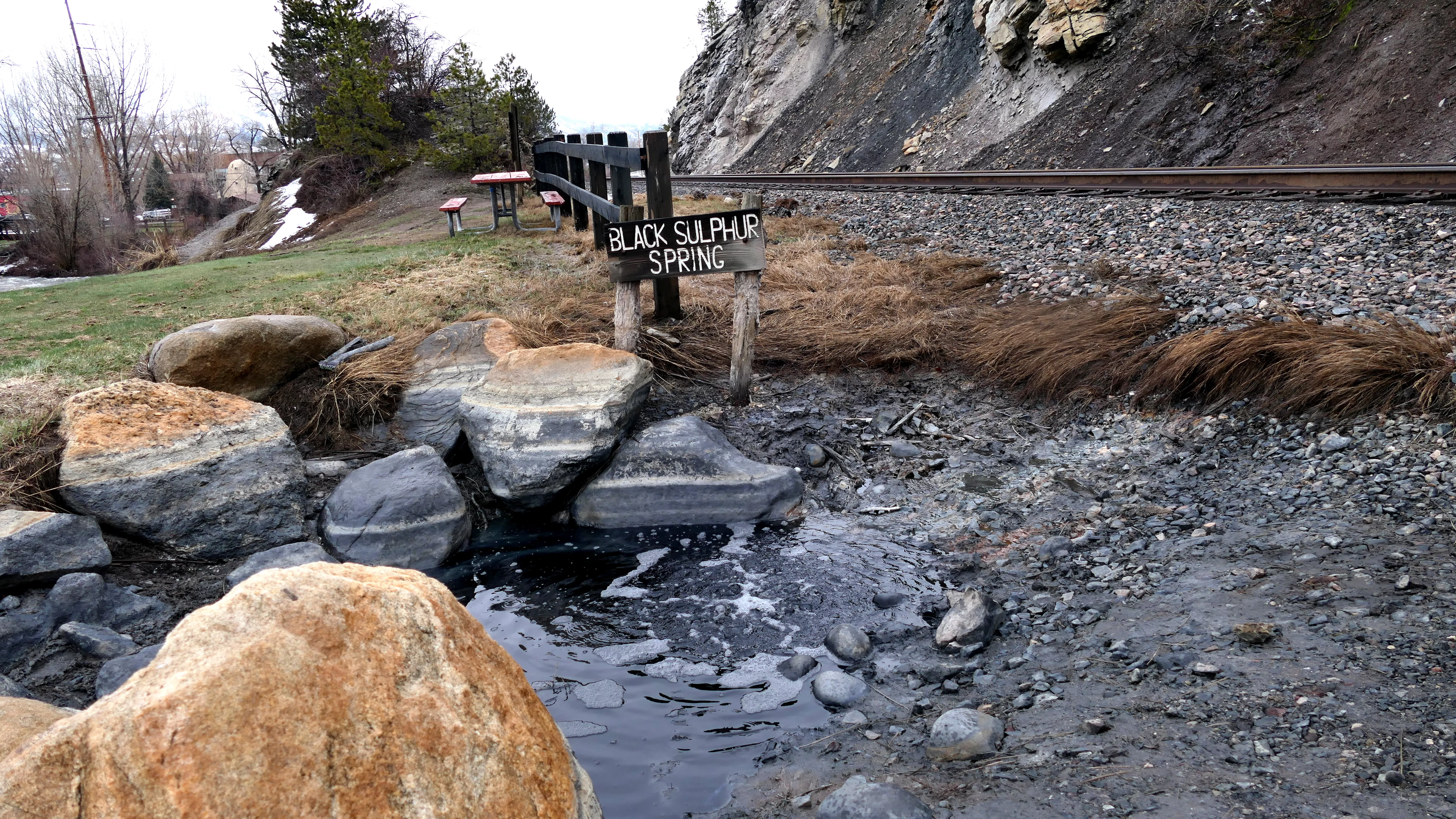
By Shannon Lukens.
The water is much lower in the Black Sulphur Spring, which sits along the Yampa River, on the edge of the railroad tracks by the library.
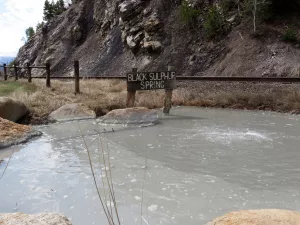
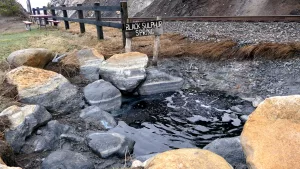
Picture from April 16, 2024.
Dagny McKinley is on the Mineral Springs Committee with the city and has written a book called, “The Springs of Steamboat.” She’s concerned that damage was done when the railroad ties were replaced along the tracks last fall.
“With the Black Sulphur Spring, it appears, and we don’t have exact proof, but it appears when the railroad came through and did some work over the summer, it somehow disrupted the flow of the spring. So if you look at the Black Sulphur Spring, the levels are significantly down from where they’ve been for the last, as long as I’ve lived here.”
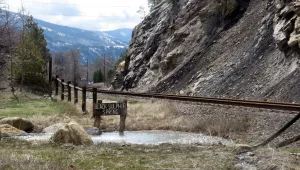
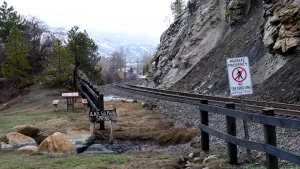
Picture from April 16, 2024.
Last year, the Steamboat Springs Historic Preservation Committee designated nine city-owned springs as historic landmarks, with the hopes of getting them on the National Register of Historic Places. But not the Black Sulphur Spring as it is on land owned by Union Pacific, but still managed by the City of Steamboat Springs.
“I can’t even express how important these springs are to who we are. Every time one gets lost, we lost the Steamboat Spring when the railroad first came through. We lost the Soda Spring when the expanded the highway in 1988.”
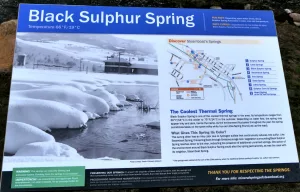
The Black Sulphur Spring is next to the Steamboat Spring, both across the river from Bud Werner Memorial Library, and along the railroad tracks.
The Springs of Steamboat Google Interactive Map
We have reached out to Union Pacific. McKinley says she would expect Union Pacific was unaware of the importance of the local springs, just like back in 1908, when the railroad tracks were put in. That disrupted the chugging noise and geyser activity for which Steamboat Springs was named. The spring was also believed to be the only natural geyser in Colorado. It once erupted up to 14 feet in the air. The construction of the railroad reduced the flow of the spring and it then ceased to be a geyser as well.
“And I think that they probably have people working on the railroad that know nothing about how springs work or about how they’re all connected through these webs underground and fault systems, so it probably wouldn’t even occur to them that if we do work here it is going to affect something 20 feet to the side of the railroad. But somebody has to be imparting that information so that we’re not disrupting one of our springs.”
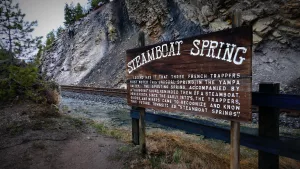
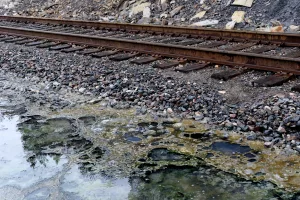
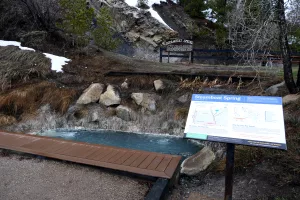
From the website for the City of Steamboat Springs…
What’s In A Name?
The name of Steamboat Springs is thought to have originated around the early 1800s when French trappers thought they heard the chugging sound of a steamboat’s steam engine. The sound turned out to be a natural mineral spring and geyser, to be named the Steamboat Spring.
Railroad
In 1909, the railroad arrived, which sparked a boom for the commercial industry in Steamboat Springs. Ranching was the primary industry of the valley and the cattle ranchers turned the new railroad depot into one of the largest cattle shipping centers of the West. Consequently, the construction of the railroad silenced the Steamboat Spring’s chugging noise forever.
Here’s more from Candice Bannister, the Executive Director of the Tread of Pioneers Museum in Steamboat Springs.
Mechanics of a Geyser: While the Steamboat Spring geyser has not erupted at this site for over 100 years, modern geologists have studied how the geyser may have functioned. Over time a layered mass of limestone rock wore away, creating a cave which continually filled with spring water. With only a small opening at the top, water was restricted from being released. When the cave filled to capacity, pressure built up and a “chugging” sound indicated the geyser was about to erupt.
Steamboat Spring geyser eruptions were similar to geysers in Yellowstone National Park.
How Our Town was Named: According to legend: Early fur trappers heard a chugging sound which reminded them of a paddle wheel steam-boat. Instead of finding a major waterway, they found a spring and geyser and named it Steamboat Spring. In 1874, town founder James Crawford staked his claim on an aspen tree near to the spring and took the name Steamboat Springs for the town.
Just a few yards upriver on the steep hillside are the Narcissus and Terrace springs. Mud from these two springs was once used to treat eczema and other skin diseases, as well as blood disorders.
